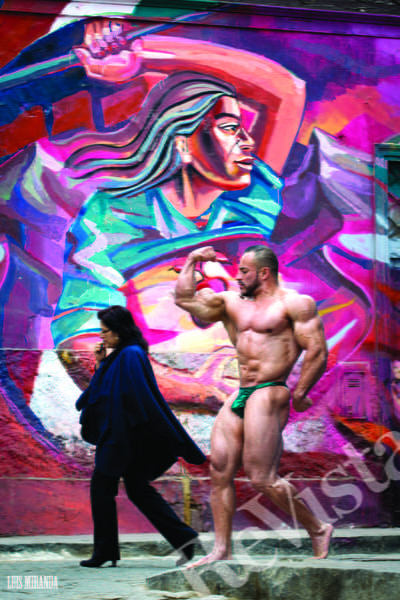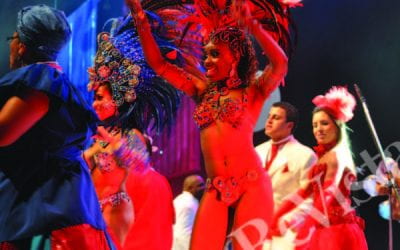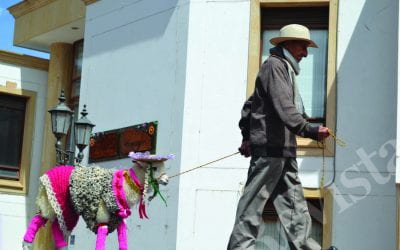Building Muscles in Rio’s Fitness Clubs
The Ritual Use of Anabolic Steroids
Men who frequent gyms and fitness clubs in Rio de Janeiro often have one thing on their mind: sculpting their bodies. I interviewed two hundred men over a period of ten years and found that that eight out of every ten men admitted to using steroids for muscle gain. The use of anabolic steroids reflected their vision—a masculine ethos accompanied by individualistic and conservative values.
On the whole, men who use steroids are professionals such as lawyers, business administrators, economists and engineers, or students, both from the university and private high schools. They represent Rio de Janeiro’s middle class and seek to promote their image through the sculpting of the body in gyms and fitness clubs. They want their bodies to reflect male dominance and their importance in Brazilian society.
The use of illegal substances to construct a muscular body is not about flaunting laws, but is rather an attempt to harmonize their bodies with dominant beauty standards. The body builders seek status within the social group that frequents gyms and fitness clubs—and within wider society. The aesthetics of muscle building are not associated with marginality or deviancy, even though the purchase of the products to maintain these physiques may be illegal. The user of anabolic steroids breaks the law in order to fit in.
When men first join a gym or fitness club, they may not yet be thinking about sculpting their bodies. They learn about the process there. Some men are bigger and more muscular and others are not, so peer pressure makes the latter overly conscious of the differences—what one might call “unequal distribution of bodily capital.” The amount of muscle determines one’s position within the gym hierarchy. These roles can be divided into three main categories:
- The Bodybuilders: these men dominate the space, and are semi-professional or professional bodybuilders who exhibit a physique marked by years or even decades of exercise. They frequent a few specialized gyms. They already possess the knowledge and thus the social capital associated with producing a muscular body, and they are usually the ones who know how to get anabolic steroids. Bodybuilders represent a hegemonic model of masculinity that everyone recognizes as an ascetic ideal that demands discipline. They exercise more than anyone else and constantly seek to develop bigger, more defined muscles and diminish their fat percentages. They are also those who consume most steroids.
- The Veterans: these men possess considerable muscle mass but not as much as bodybuilders. They have years of exercise under their belt, but without the dedication typical of bodybuilders. They consume steroids sporadically, with the objective of “keeping an attractive body,” which indicates that they follow less stringent guidelines compared to bodybuilders. They represent a hegemonic type of masculinity that is more attainable.
- The Common Men: these men are the largest group, constituted by all those who do not have very athletic physiques. They are judged as being too thin or too fat by the other two groups. They do not possess any “bodily capital” and are thus novices or sporadic gym goers who are deemed by those better endowed as not dedicated enough to exercise or to diet.
Bodybuilding has similarities to the rituals that could be found in religious practices or rites of passage. The construction of the body and of a masculine identity within gyms and fitness clubs can take two to four years, or even longer in certain cases. The novice who wants to become a bodybuilder has to adapt his body as much as possible to correspond to the desirable physique, and to complete this social ritual he needs to use steroids. The use of these drugs has not only physical effects but also acquires a symbolic significance to the group as a rite of passage. It marks the transition from one status to another within the hierarchy of a gym or fitness club.
A novice proves he is aspiring to transform himself from a common man to a bonafide bodybuilder by learning how to use steroids. The hierarchy of the fitness club is determined by the behavior, the knowledge and the physique that a practitioner gradually adopts. In other words, the physical changes signify a change in status because they mean one has gained the social capital associated with knowing how to buy these illegal substances, the effects of each substance, how to administer them, how to measure their effects, and what diets and supplements should be used in conjunction with steroids. The production of outstanding muscularity requires a certain experimentation with the body and the knowledge of how to transform it through disciplinary practices in the name of health and well-being.
Unlike other rites of passage, in which going through the ritual practice guarantees a new position in the social hierarchy, the identity of a bodybuilder is more fleeting. Even if he is recognized as a bodybuilder at his gym, he must always have to pay the price of taking steroids and run the risks they represent, because his whole identity is tied to a physical aspect that can easily deteriorate over time. Being “in shape” is a fragile and volatile condition that is always in danger of deteriorating.
This process of constructing a bodybuilding identity is tied to the process of constructing masculinity. As a “real man,” the bodybuilder must constantly prove to himself and to others that he is strong enough, audacious enough and macho enough. Those who frequent fitness clubs are included in the most macho group through steroid use. This group identity is later reaffirmed through parties and other social events that also function as rites of passage. At these social events a man consolidates his position within the larger social group through the reinforcement of social relations, until he is eventually accepted as “one of us.” Even the fact of being invited to these events signifies the recognition of a new status due to a man’s physique.
These rituals separate the “strong, healthy and handsome” from those considered “weak, sick and ugly.” Anabolic steroids, therefore, represent a fundamental item in the aesthetic construction of masculinity of the alpha group. All users know that steroids can cause cancer, sexual impotence and even death, but these risks prove that a bodybuilder is willing to submit his body to pain and suffering in the name of becoming initiated into the group.
The binary oppositions mentioned earlier—between weak and strong men, healthy and sickly men, or handsome and ugly men—are directly related to a specific worldview. These men are, in general, members of an urban middle class seeking upward mobility, and they share specific tastes pertaining to social class. These tastes, which reassert social distinctions, are translated into outward signs, in this case the bodily physique associated with middle-class masculinity. A rigid and imposing muscularity is the foremost sign of social distinction and power in the group I studied, but it has to be a body sculpted by machines and by steroids, a result not available to a blue-collar worker. This hegemonic masculinity is tied to a particular aesthetic but is also tied to the values, attitude and morals of a dominant heterosexual macho behavior.
Bodybuilding, therefore, can be used as an aesthetic practice that reproduces certain social classifications, reinforcing not only the gender binary but also class distinctions. This middle-class vision of the world is crafted on male bodies through exercise, sweat, diets, supplements and anabolic steroids. One’s appearance becomes a type of bodily capital that can be invested in one’s future. Men seek to institute and expand their prestige through the production of virile physiques; together with other symbols of power, these provide them status in the eyes of men and of women.
This article was translated from the Portuguese by Alvaro Jarrin.
Spring 2017, Volume XVI, Number 3
Cesar Sabino is an adjunct professor in the Department of Political Science at the Federal University of the State of Rio de Janeiro (UNIRIO). He received his Ph.D in Anthropology and Sociology from the Federal University of Rio de Janeiro (UFRJ). His research focuses on social theory, bodily practices and their relationship to changes in social structure.
Related Articles
Sensual Not Beautiful
While white actresses and models still dominate beauty and fashion magazines in Brazil, on my last few visits to Brazil, I’ve noticed that actresses of African descent such as…
The Queen of Sheep
The Queen of Sheep Beauty Pageant is an offbeat Colombian beauty contest that parodies other common beauty pageants in the country revolving around local agricultural products or cattle animals. The contestants of this…
Peruvian Pishtacos
News stories of captured drug gangs are so common in Peru that viewers barely noted the television appearance of three prisoners in November 2009. Police had captured the “gang”…






